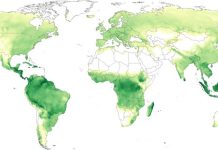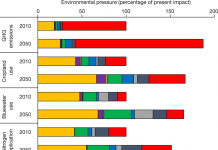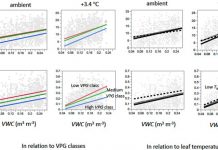【利用Bayesian多变点分析摄像头图像观测植物季节性变化】Raimund Henneken Volker Dose Christoph Schleip Annette Menzel. Detecting plant seasonality from webcams using Bayesian multiple change point analysis. Agricultural and Forest Meteorology 2013 168: 177–185.
Abstract
Phenological observations have a long tradition. By contrast digital webcam-based phenological research has only developed in recent years prompted by the development of cheaper user-friendly digital camera systems and by higher staff costs. Webcam photography provides spectral information in red green and blue (RGB) wavelengths which mirror the seasonal colour changes in trees during bud burst leaf unfolding senescence and leaf fall.
Recent publications have mainly used two types of image data analysis to define onset dates of certain phenological stages and to compare species and growing seasons. These methods work well but require high quality of the webcam images. However changing light and weather conditions complicate data analysis particularly at increasing camera-to-subject distances. We investigated a series of images providing colour information on different tree species e.g. Fagus sylvatica Populus tremula as well as of trees at different altitudes (700–1200 m) in the Bavarian Forest National Park Germany. Webcam images were analysed by the two previously published methods and compared with results derived from a newly developed Bayesian multiple change point analysis. In particular transition dates of leaf development were identified in the green as well as the red colour channel.
The Bayesian analysis described phenological transition dates in spring and autumn and specified the uncertainties of the model fit. By contrast previously employed methods have shortcomings associated with unrealistic asymptotic assumptions in logistic model fits or inability to cope with noise in data series.
The change point analysis at different elevations showed how the Bayesian approach coped with increasingly degraded image quality. A delay in green-up of about 2.5 days per 100 m of altitude was estimated for Fagus sylvatica in the study area. Autumn phenology at different altitudes did not show clear patterns.
The Bayesian model approach allows not only the calculation of phenological change points during the year but also estimates the probability of those changes occurring on a particular day. This method appears to estimate reliably phenological events in the growing season especially when handling low quality webcam data either from poor weather conditions or when the subject is at a considerable distance from the camera.







